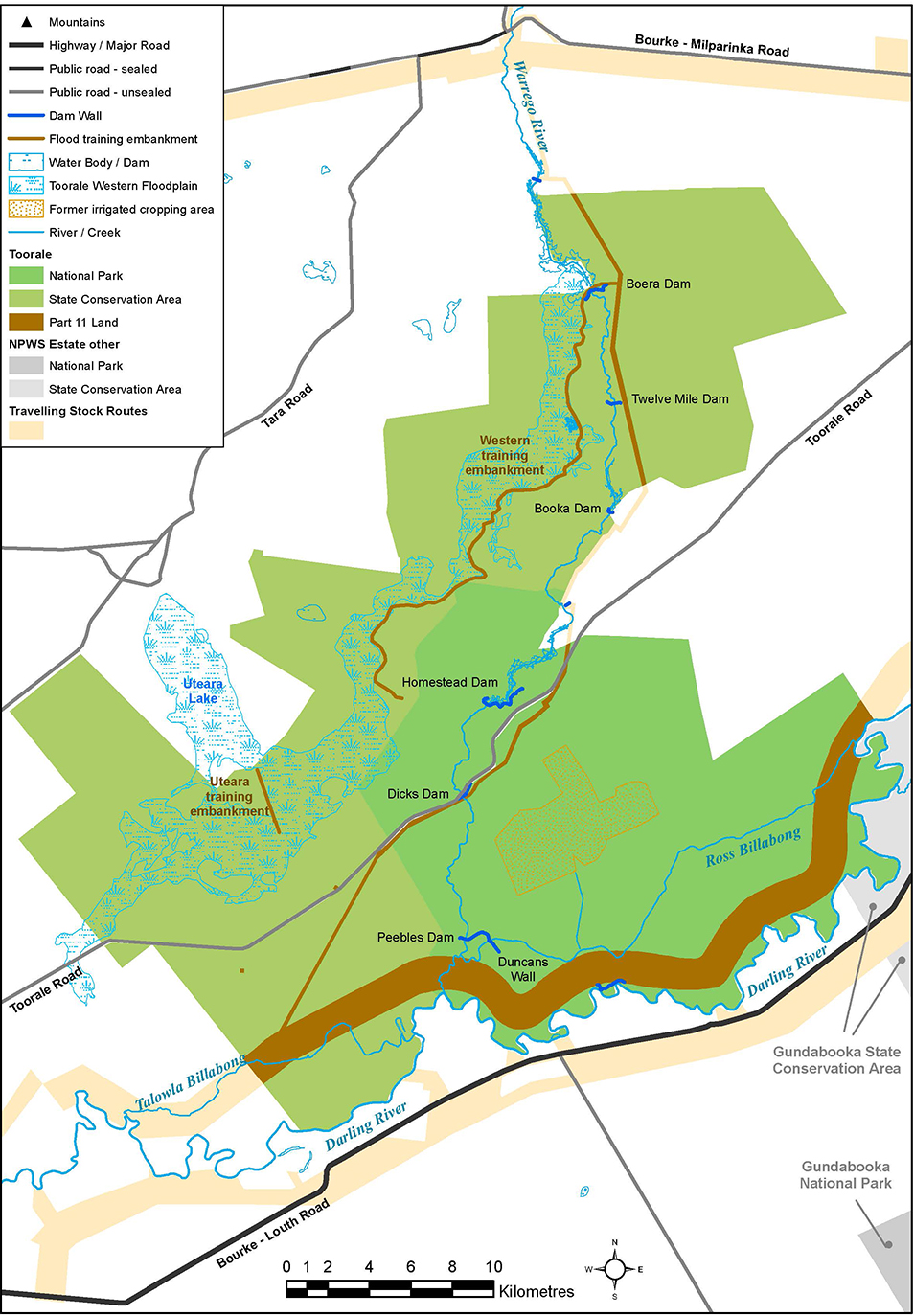Public exhibition of the Review of Environmental Factors (REF) provided an opportunity for members of the community to comment on the project. Comments closed 30 April 2019.
Toorale Station was acquired by the NSW Government in 2009 and added to the NSW reserve system as Toorale National Park and State Conservation Area. At the time of purchase, the Commonwealth Environmental Water Holder bought the Warrego and Darling water entitlements held for Toorale. This water is now used to deliver environmental outcomes both on Toorale and downstream.
The Warrego River on Toorale currently contains several storages that hold water on the reserve and constrain flows downstream to the Darling River. These storages were first constructed back in the 1800s and have important historic value. The ecosystems on Toorale have also adapted to these modified flow conditions. Toorale has very significant Aboriginal cultural heritage and Aboriginal people maintain an ongoing connection to the area.
The Toorale Water Infrastructure Project seeks to modify the existing storages on Toorale to enable greater quantities of flows to be passed through the Warrego River to the Darling River, and to improve conditions so that fish can more easily move through this reach.
The project is planned to be undertaken in 2 phases:
- Phase 1 – removal of Peebles Dam and temporary repair of Homestead Dam
- Phase 2 – modifications to Boera, Booka and Homestead Dams including construction of fish passage structures.

Map of Toorale National Park and State Conservation Area
What is a Review of Environmental Factors?
A Review of Environmental Factors (REF) is undertaken to assess the potential impacts of a proposed development or activity on the environment to ensure compliance with the NSW Environmental Planning and Assessment Act 1979 and any other relevant state and national laws.
The Department of Climate Change, Energy, the Environment and Water (former Office of Environment and Heritage) must consider the environmental impacts of the project before deciding if it can proceed, or under what conditions it may proceed.
What happens next?
At the end of the public exhibition period, submissions received will be reviewed and a response considered. This may mean that more information needs to be obtained or some matters revisited based on comments received from the public.
The department will prepare a submissions report and this will be used to help inform a final decision about the project.
How can I get more information about the Review of Environmental Factors?
More information can be obtained from [email protected].